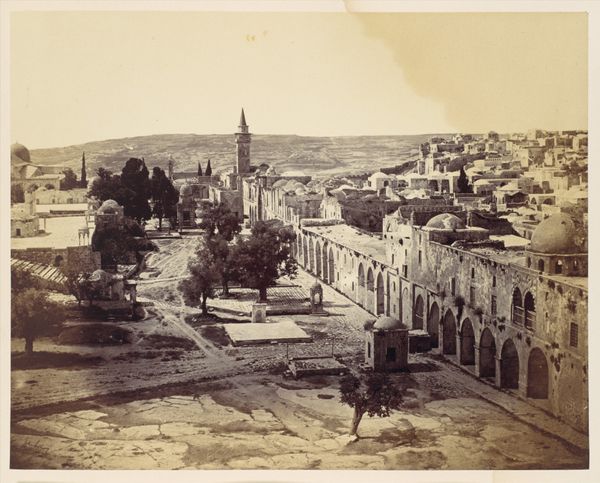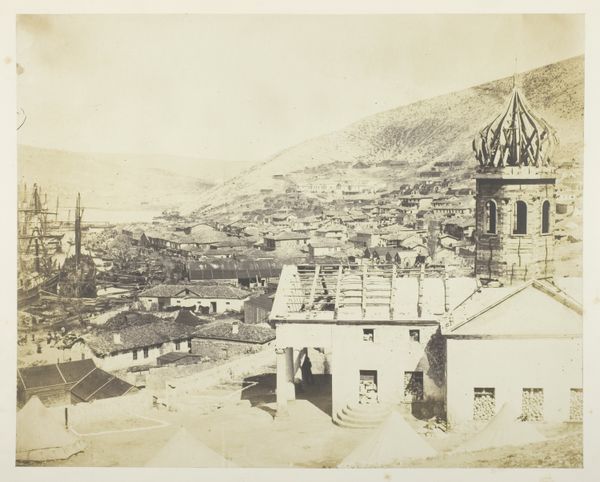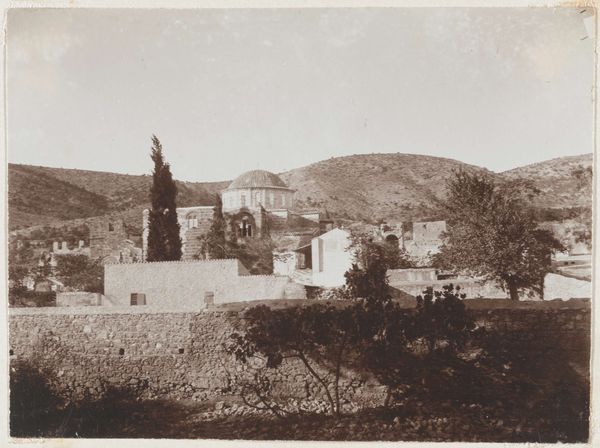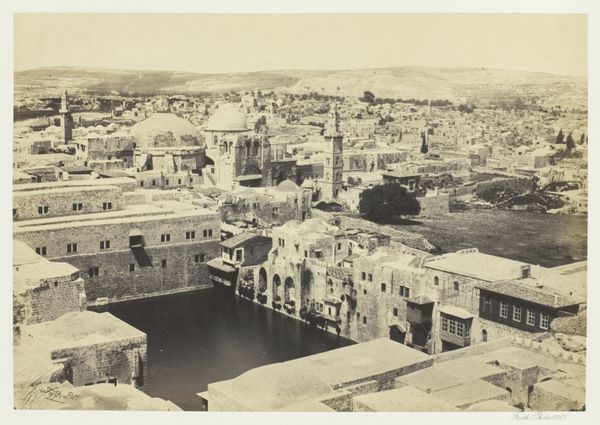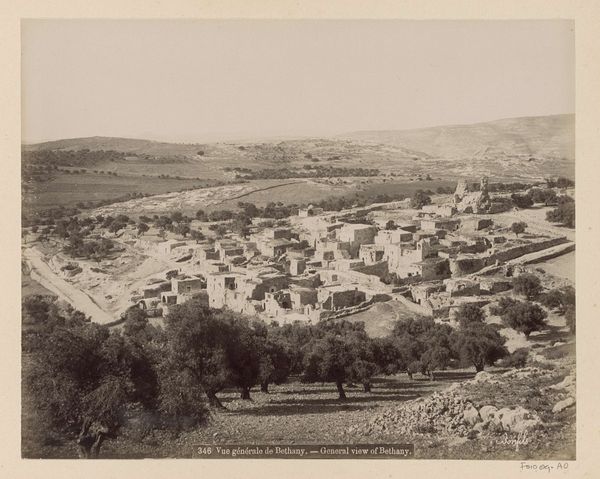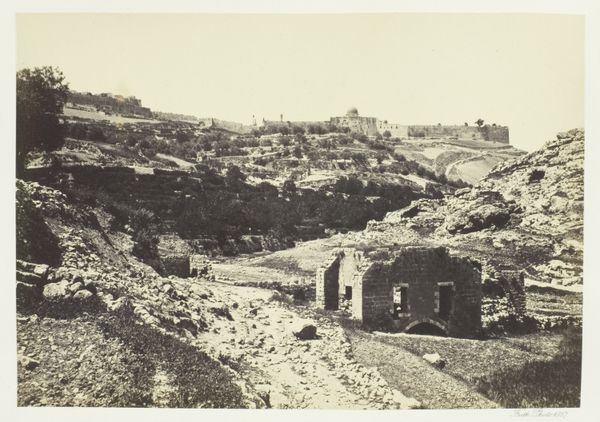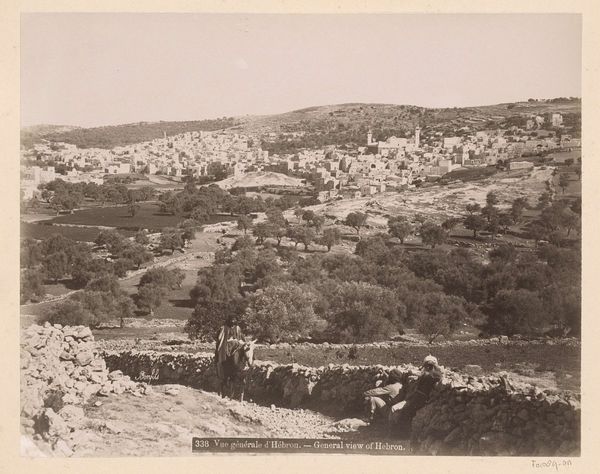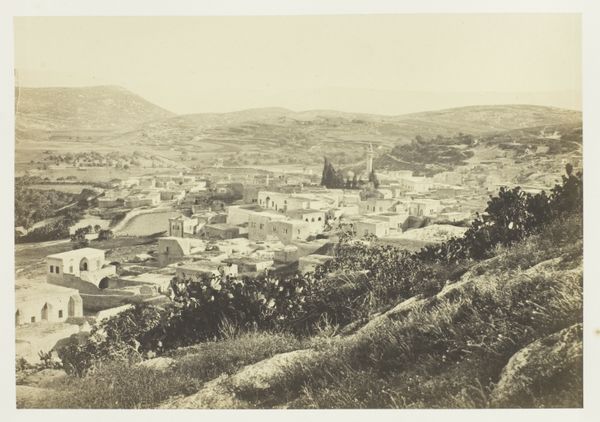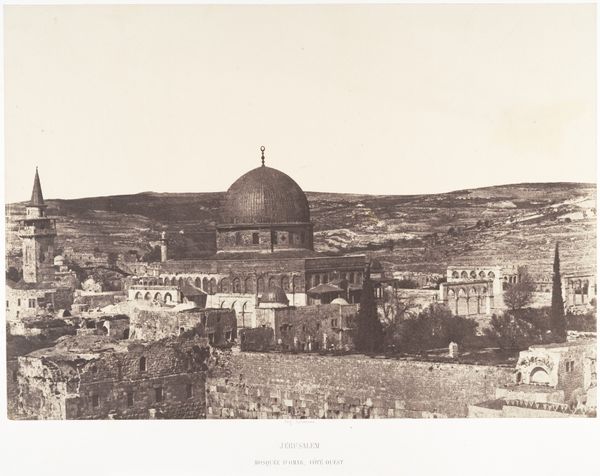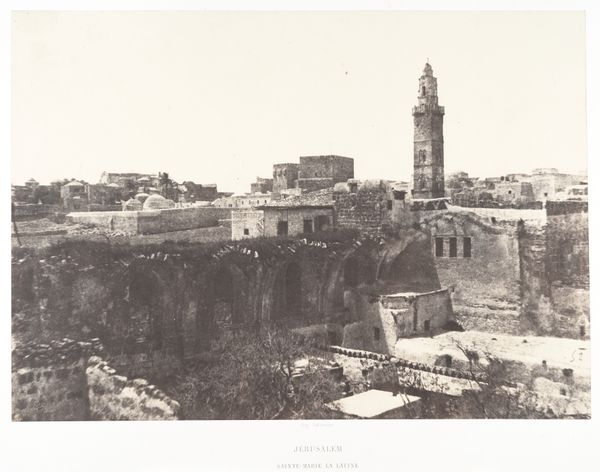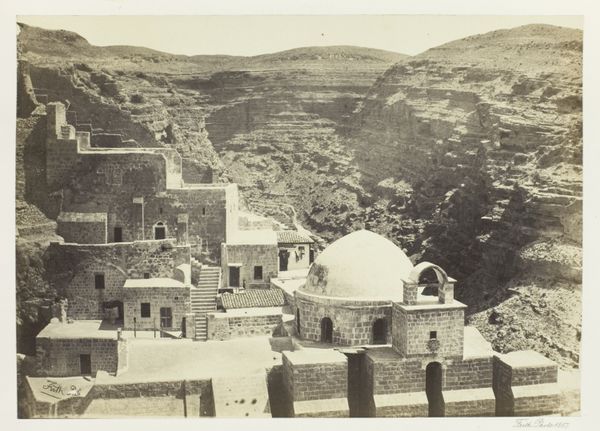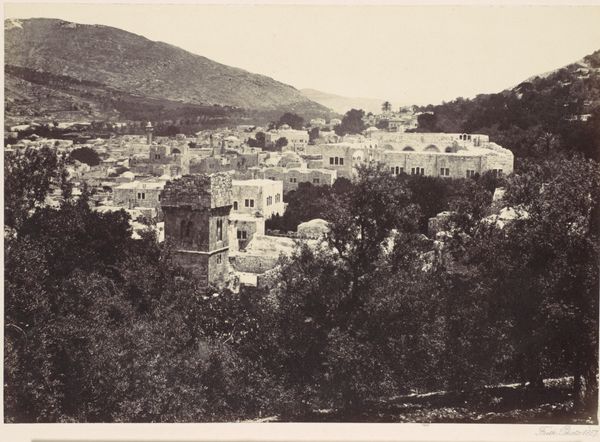
The New English Church from the Tower of Hippicus, Jerusalem 1857
0:00
0:00
print, daguerreotype, photography
# print
#
daguerreotype
#
photography
#
ancient-mediterranean
#
cityscape
Dimensions: 15.7 × 22.7 cm (image/paper); 29.3 × 42.6 cm (album page)
Copyright: Public Domain
Curator: Here we have Francis Frith’s 1857 daguerreotype, “The New English Church from the Tower of Hippicus, Jerusalem.” Editor: My initial reaction is that it's incredibly still. The whole city, captured in a time capsule, radiating permanence with its sturdy construction of masonry. Curator: The material choices contribute greatly to that impression. The very process of the daguerreotype, with its mirrored surface and metallic base, inherently conveys a sense of solidity and lasting presence. Editor: Right, but that feeling clashes with the colonial undertones humming beneath the surface. Look at the title. “The *New* English Church.” That immediately signals a specific agenda and the assertion of power dynamics in Jerusalem at this time. Curator: Absolutely. Frith's meticulous method involved on-site preparation and development under difficult conditions. Imagine the labour, the chemicals needed for the daguerreotype process, all imported and applied in this environment. What about the water source? The silver and mercury used in the daguerreotype itself, consider how they are used here. Editor: It also makes me consider the very act of documenting this landscape and superimposing European architectural norms. The construction of the New English Church in itself must have generated substantial labor and resource extraction. Did Frith, in his creation of this image, address the colonial dynamics present, or did he operate from a position of privilege inherent within the colonial framework? Curator: It is definitely worth mentioning that these photos became essential components for promoting trade, colonialism, and also archaeological ventures throughout the Middle East. The visual language and technical process became tools for managing perception and influence on a massive scale. Editor: Exactly. By considering the circumstances surrounding Frith's work and the subsequent dissemination of his images, it becomes clearer how photography became intricately intertwined with complex social dynamics and ideological agendas. This church and others would certainly play an important role. Curator: Examining photography this way really brings to light how process is just as important as what it captures, the relationship between means and messages so closely intertwined. Editor: And thinking through the role of the artwork as an artifact—embedded in layers of historical processes, whether intended or not—opens a space to engage with uncomfortable discussions of power, representation, and agency.
Comments
No comments
Be the first to comment and join the conversation on the ultimate creative platform.
